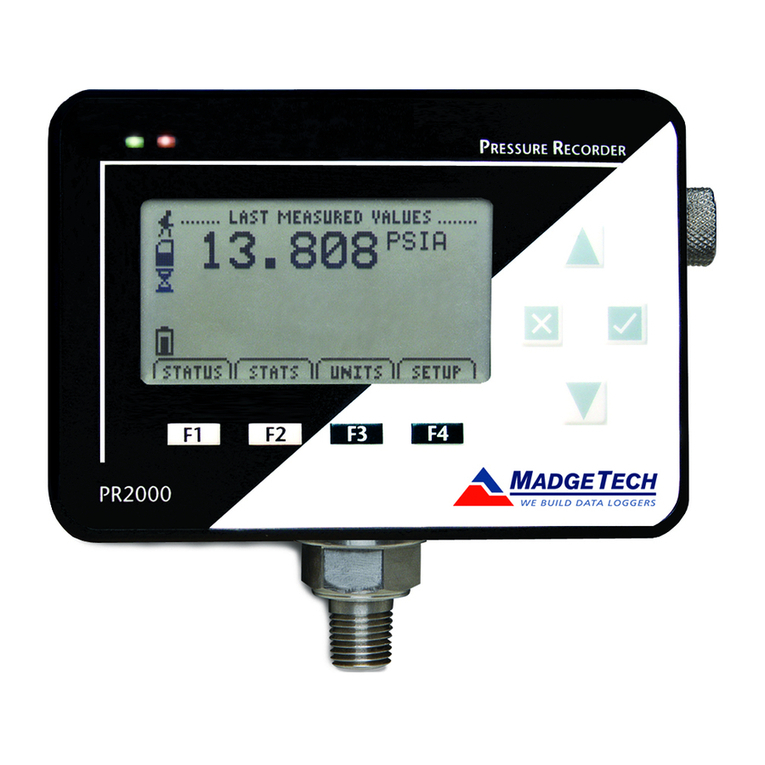
Product User Guide | 5
VTMS
ACTIVATING & DEPLOYING THE DATA LOGGER
1. Connect the RFC1000 wireless transceiver (sold separately)
to the Windows PC with the provided USB cable.
2. Additional RFC1000’s can be used as repeaters to
transmit over greater distances. If transmitting over
a distance greater than 500 feet indoors, 2,000 feet
outdoors or there are walls, obstacles or corners that
need to be maneuvered around, set up additional
RFC1000’s as needed. Plug each one into an electrical
outlet in the desired locations.
3. Verify that the data loggers are in wireless transmission
mode. Push and hold the Wireless button on the data
logger for 5 seconds to activate or deactivate wireless
communication.
Different wireless channels may be used to create multiple networks in one area, or to avoid wireless interference from
other devices. Any MadgeTech data logger or RFC1000 wireless transceiver that is on the same network is required to use
the same channel. If all of the devices are not on the same channel, the devices will not communicate with one another.
MadgeTech wireless data loggers and RFC1000 wireless transceivers are programmed by default on channel 25.
Changing the channel settings of the VTMS
CHANNEL NOTE: MadgeTech wireless data loggers and
wireless transceivers purchased prior to April 15, 2016
are programmed by default to channel 11. Please refer to
the Product User Guide provided with these devices for
instructions to change the channel selection if needed.
CHANNEL PROGRAMMING
4. On the Windows PC, launch the MadgeTech 4 Software.
5. All active data loggers will be listed in the Device tab
within the Connected Devices panel.
6. To claim a data logger, select the desired data logger in
the list and click the Claim icon.
7. Once the data logger has been claimed, select a start
method in the Device tab.
1. Switch the wireless mode to OFF by holding down the
Wireless button on the data logger for 5 seconds.
2. Using the provided USB cable, plug the data logger into
the PC.
3. Open the MadgeTech 4 Software. Locate and select the
data logger in the Connected Devices panel.
4. In the Device tab, click the Properties icon.
5. Under the Wireless tab, select a desired channel
(11 - 25) that will match with the RFC1000.
6. Click Apply to save the settings to the device.
7. Disconnect the data logger.
8. Return the device to wireless mode by holding down
the Wireless button for 5 seconds.
For steps to claim the data logger and view data
using MadgeTech Cloud Services, refer to the
MadgeTech Cloud Services Software Manual at
To configuring the channel settings of the
RFC1000 wireless transceiver (sold separately),
please refer to the RFC1000 Product User
Guide that shipped with the product or
download it from the MadgeTech website at
www.GlobalTestSupply.com
Find Quality Products Online at: sales@GlobalTestSupply.com




























